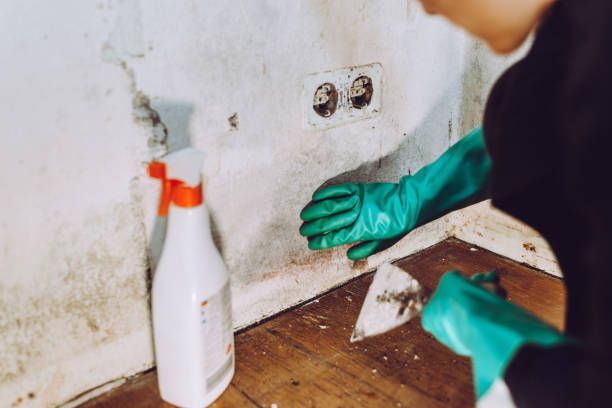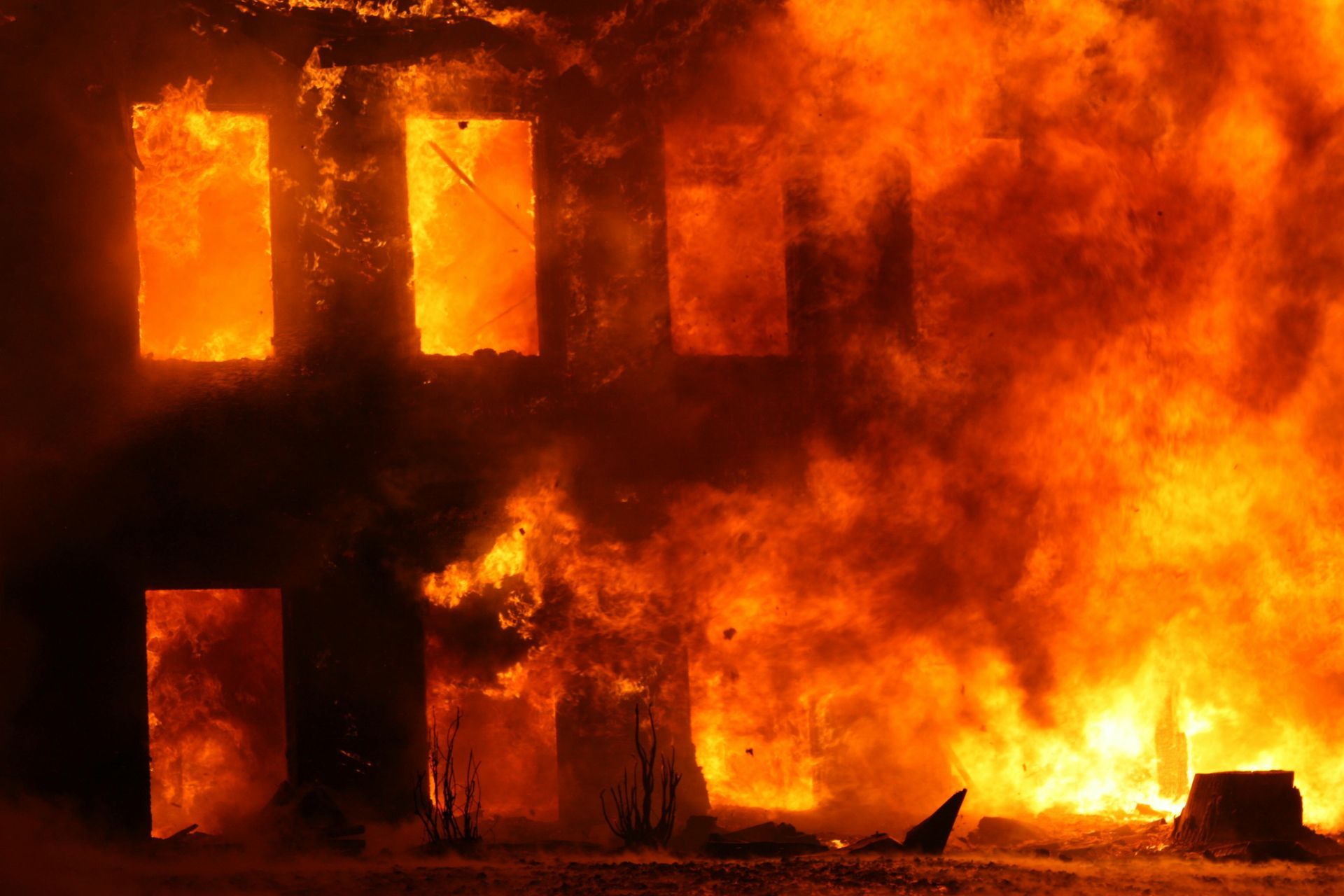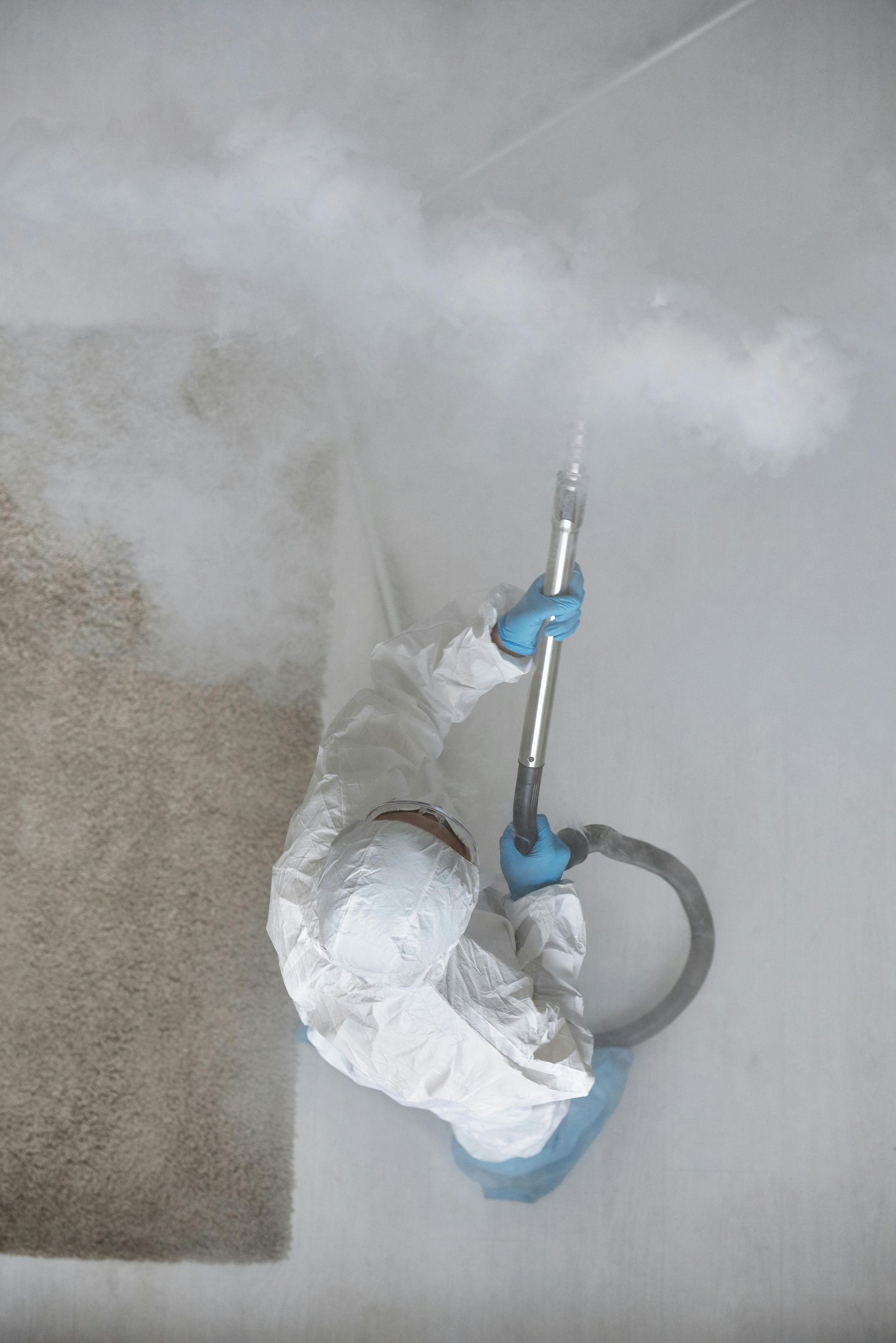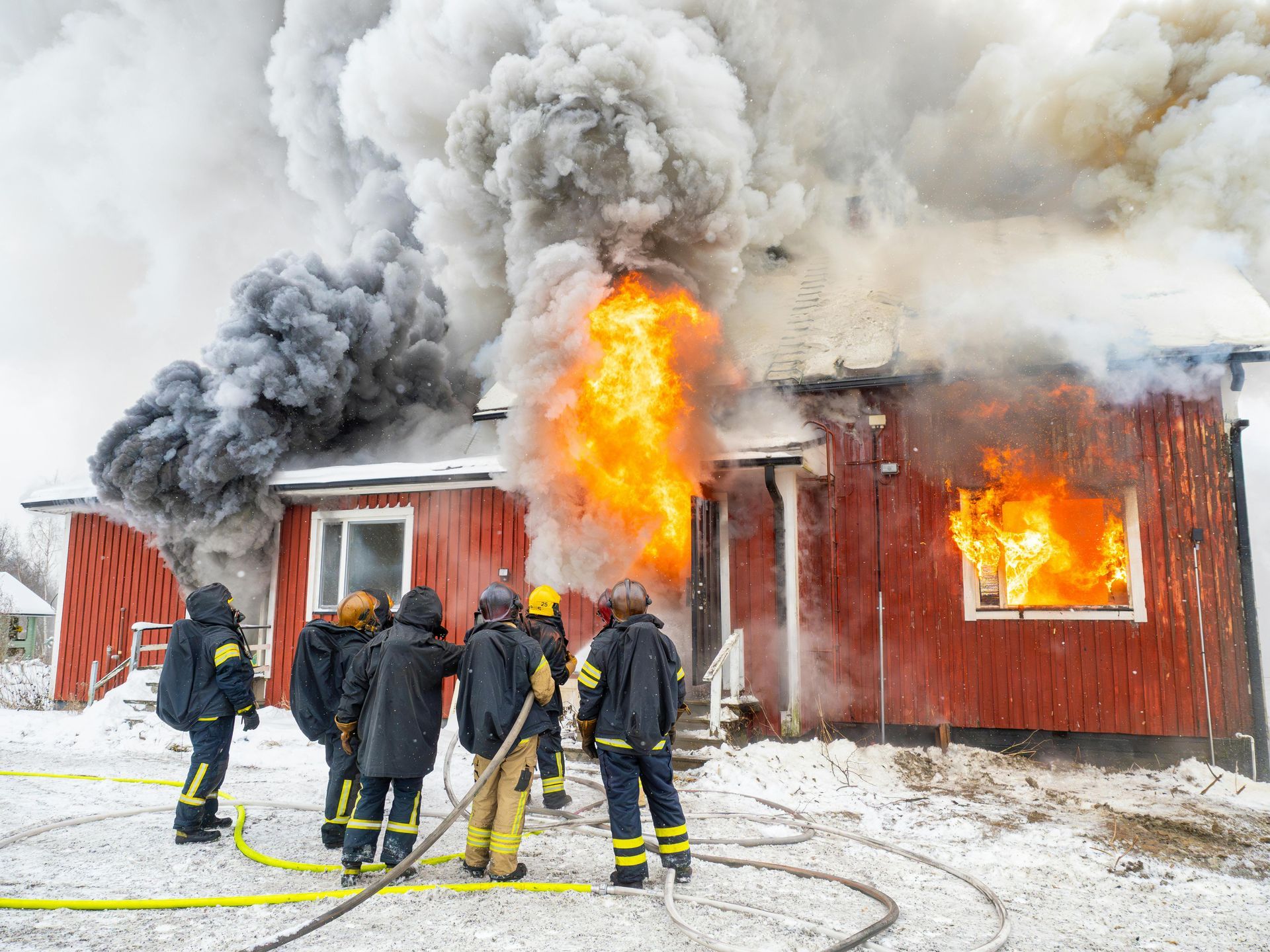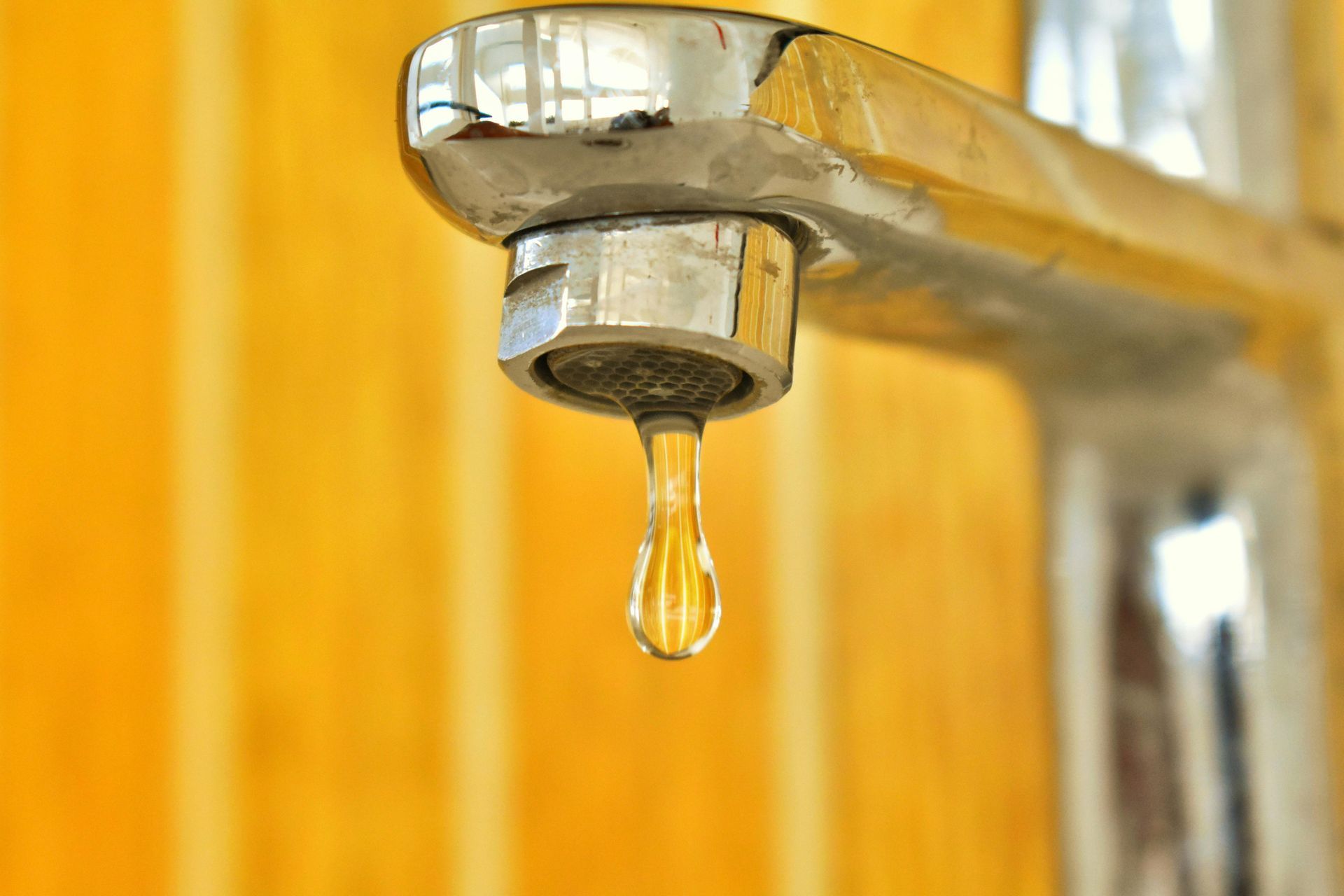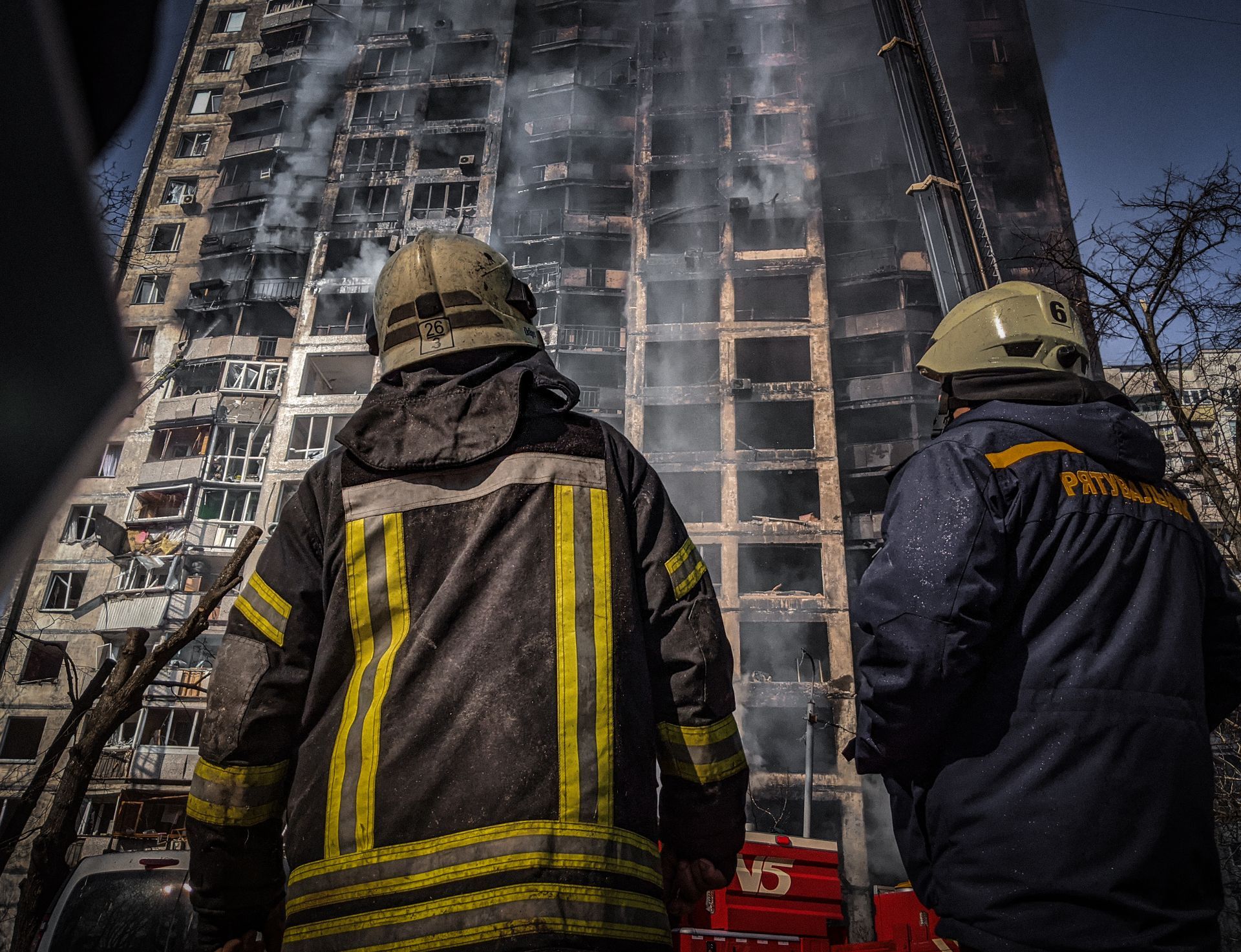The Causes and Effects of Fire Damage
Understanding the Cause and Effect of Fire Damage: A Comprehensive Guide

Every year, fires cause billions of dollars in damage to homes and businesses, fundamentally altering the lives and operations of those affected. Behind each statistic lies a story of disruption, loss, and the arduous path to restoration. Understanding the cause and effect of fire is not merely academic; it's critical for both preventing fires and effectively restoring property post-incident. This guide explores the intricacies of fire damage, from identifying common culprits to comprehending the subtle ways in which fire can compromise structural integrity and air quality. We'll also cover the latest in restoration techniques and technologies, emphasizing our commitment to restoring not just property but peace of mind. Through expert insights and industry-specific language, we aim to equip you with a comprehensive understanding of fire damage, underpinning the importance of professional, high-quality restoration services.
Common Causes of Fires
Understanding how fire is formed is crucial in preventing future incidents. Fires may ignite through human error, malfunctioning equipment, or natural phenomena. Recognizing these diverse causes is a fundamental step in safeguarding against the unwelcome disruption and extensive damage fires inflict upon lives and properties.
Natural Causes
Natural phenomena play a significant role in the ignition of fires. Lightning strikes, a common natural initiator, can rapidly ignite fires in susceptible areas, particularly during periods of low humidity and high temperatures. Drought conditions exacerbate this risk, drying out vegetation and making it more inflammable, thereby setting the stage for wildfires that can spread swiftly across vast areas. Additionally, spontaneous combustion, often overlooked, can occur in nature when specific materials accumulate heat to the point of ignition without an external flame. These environmental conditions, when combined, create a volatile setting for natural fires, underscoring the importance of understanding and mitigating these risks to prevent extensive damage to ecosystems and properties.
Human-induced Causes
Apart from natural factors, fires frequently stem from human actions, both deliberate and accidental. Deliberate arson, a criminal act aimed at causing damage, underscores the need for vigilance and preventive measures. Accidental causes, however, account for a significant number of fire incidents. These include electrical faults from overloaded circuits or faulty wiring, unattended cooking or candles acting as ignition sources, and careless disposal of cigarettes. Such incidents not only highlight the imperatives of stringent fire safety measures but also the critical role of fire safety education in mitigating risks. Understanding these causes and implementing preventive strategies are paramount in reducing the prevalence of fire-related disturbances and ensuring the safety and security of properties.
Technological & Mechanical Failures
Electrical malfunctions, gas leaks, and machinery issues are pivotal in the genesis of fires, often due to neglected maintenance and oversight. Electrical fires can erupt from aged wiring, overloaded circuits, or faulty appliances, articulating the necessity of regular electrical inspections. Similarly, undetected gas leaks from both natural gas and propane systems pose an explosive hazard, igniting swiftly when met with a spark. In industrial contexts, machinery malfunctions due to wear and tear or improper handling can lead to overheating, creating potential fire hazards. Proactive, regular maintenance checks are indispensable in identifying these risks early, precluding the occurrence of fires and safeguarding both property and lives. Our emphasis on preventative strategies underlines a commitment to fostering safety and resilience through expert inspection and maintenance services.
Immediate Effects of Fire Damage
The immediate aftermath of fire reveals a spectrum of negative effects, visibly manifesting in both the tangible destruction of structures and the intangible loss of personal belongings. While the physical damage to property is often stark and palpable, encompassing charred walls and collapsed roofs, some consequences, like compromised air quality, are less visible but equally impactful. These immediate outcomes underscore the intricate nature of fire damage restoration, highlighting the necessity for specialized expertise to address both obvious and subtle repercussions.
Structural Damage
Fire damage extends beyond the visible burn marks on exteriors to compromise the very foundation and structural integrity of buildings. Heat intensity can cause foundational materials to expand and contract, leading to unseen fissures and compromised load-bearing capacities. Walls and support structures, subjected to the direct onslaught of flames, might exhibit superficial charring, while internally, the heat compromises their structural stability. This hidden damage necessitates a detailed and expert assessment to ensure the safety and integrity of the building, underscoring the need for skilled restoration services adept in identifying and mitigating such intricate issues.
Damage to Personal Property
The loss of personal property in a fire encompasses more than the destruction of physical items; it represents a profound emotional and financial toll. Sentimental belongings and irreplaceable mementos, once lost, leave a void that transcends monetary value. Important documents and heirlooms reduced to ashes not only disrupt lives but also signify a loss of identity and continuity. This intangible damage delivers a deep emotional impact, highlighting the necessity for compassionate and comprehensive restoration services that recognize and address both the visible and invisible scars left by such tragedies.
Air Quality and Residual Smoke
The lingering effects of smoke after a fire are both hazardous to health and detrimental to the ambiance of a property. Smoke infiltrates deep into the fabric of the environment, embedding an acrid odor and distributing harmful particles that can impair air quality. This residual presence poses significant breathing hazards, particularly exacerbating conditions for individuals with respiratory issues. Professional intervention, utilizing advanced techniques and equipment, is essential to thoroughly cleanse the air, remove the pervasive smoke odor, and ensure the safety and comfort of the affected premises.
Long-term Effects of Fire Damage
The long-term consequences of fire damage extend beyond the initial impact, affecting the structure's integrity and safety, along with potentially lasting health concerns due to compromised air quality.
Health Concerns
Exposure to residual smoke and soot post-fire poses significant health risks, including respiratory issues and potential carcinogenic effects. The fine particles in soot can penetrate deep into the lungs, exacerbating existing conditions such as asthma and leading to chronic respiratory diseases. Furthermore, the complex mixture of chemicals present in smoke, including known carcinogens, increases the risk of cancer development over prolonged exposure periods. Other health risks encompass eye irritation, skin disorders, and compromised immune system function, underlining the critical importance of thorough cleaning and air quality restoration following a fire incident.
Economic Implications
The aftermath of a fire often precipitates a substantial financial toll, encapsulating not only the immediate costs of structural reconstruction and the restoration of personal property but also navigating the intricate landscape of insurance claims. These challenges are compounded by potential depreciation in the property's value, a significant concern for property owners. Our team adeptly manages the restoration process, ensuring that every detail is accounted for, thereby mitigating financial strain. Nonetheless, the economic implications extend beyond tangible repairs, underscoring the necessity of comprehensive restoration strategies that consider both immediate and long-term financial impacts.
Environmental Impact
Fires devastate not only structures but also the local ecosystems they inhabit. The destruction of vegetation leads to loss of habitat and biodiversity, disrupting the balance of local flora and fauna. Additionally, fires contribute to air pollution, releasing particulate matter and harmful chemicals into the atmosphere, exacerbating respiratory conditions in humans and affecting animal health. On a larger scale, the carbon emitted by fires adds to the greenhouse gases in the atmosphere, influencing global climate patterns. These environmental impacts underscore the imperative for swift, expert restoration efforts to mitigate the ecological footprint of fires, emphasizing our commitment to preserving and restoring the integrity of both built and natural environments.
Fire Damage Assessment: Knowing the Extent
The meticulous process of assessing fire damage necessitates the expertise of certified professionals. These specialists are equipped with the precise knowledge and tools required to conduct thorough evaluations, pinpointing both evident destruction and the more inconspicuous, insidious effects of fire and smoke. During an inspection, experts meticulously examine structural integrity, evaluate electrical systems, and test for toxic substances to ensure a comprehensive restoration blueprint. They leverage state-of-the-art technology, including thermal imaging, to detect hidden hotspots and air quality monitors to assess contamination levels, ensuring nothing is overlooked.
For property owners awaiting professional assessment, preliminary self-evaluation is advisable, yet paramount is adherence to safety protocols to prevent further harm. Ensure the property is officially declared safe by emergency services before re-entry. Wear protective gear to shield against hazardous particles. Document visible damage with photographs, maintaining a safe distance from weakened structures and any electrical components that may pose a risk. This preliminary documentation can aid restoration professionals in hastening the recovery process, yet it's critical to remember that only certified technicians can truly ascertain the full extent and path to restoration. Your safety and the structural integrity of your property depend on professional expertise.
Mitigating and Restoring Fire Damage
In the immediate aftermath of a fire, taking swift, decisive action can significantly mitigate damage and pave the way for effective restoration. Begin by ensuring the property is well-ventilated; this not only aids in reducing smoke and soot presence but also curtails potential health risks. Documenting every facet of the damage thoroughly provides indispensable evidence for insurance claims, facilitating a smoother claims process. Securing temporary shelter is paramount, safeguarding the well-being of all affected parties during restoration.
Our team of seasoned professionals steps in with precision and expertise to restore your property to its pre-incident glory. The restoration process commences with a meticulous removal of smoke and soot, utilizing industry-leading techniques that are gentle on surfaces yet uncompromising on pollutants. Deodorization follows, addressing and neutralizing lingering odors with state-of-the-art technology, ensuring the air quality is restored to safe levels. The culmination of our efforts is evident in the structural repairs and refurbishments, where our commitment to craftsmanship and quality shines through. Every step, underpinned by our profound industry knowledge and dedication to excellence, is geared towards not just restoring structures but also rebuilding lives disrupted by fire damage.
Preventing Future Fires
Understanding and implementing fire safety measures is paramount in preventing future calamities. Knowledge of the extensive impact of fires can underscore the significance of prevention. Being proactive in fire safety not only preserves property but also guards against potential loss and disruption, making it a critical strategy for safeguarding the well-being of individuals and communities alike.
Household Fire Safety Measures
Implementing routine smoke detector maintenance ensures early warning in the event of a fire, a critical first line of defense in safeguarding lives and property. Cultivating safe cooking practices, such as never leaving cooking appliances unattended and keeping combustible materials away from heat sources, significantly reduces the risk of kitchen fires, one of the most common household fire causes. Additionally, proper storage of flammable materials—securely and away from potential ignition sources—mitigates the chance of accidental fires. These preventative measures, fundamental yet powerful, are vital steps in fostering a safer living environment.
Industrial and Commercial Fire Prevention
In the realm of industrial and commercial settings, adhering to best practices for fire prevention is paramount to safeguard both assets and lives. Regular, comprehensive checks on all electrical and mechanical equipment, ensuring these systems are maintained to the highest standards, are crucial for identifying potential fire hazards before they ignite. Equally important is the investment in employee training programs that foster a culture of safety awareness and preparedness, empowering staff to recognize risks and respond effectively in emergency scenarios. Compliance with local and national fire safety codes and regulations not only affords legal protection but also significantly reduces the risk of fire outbreaks. When conscientiously implemented, these vital measures form the backbone of a robust fire prevention strategy, underscoring our unwavering commitment to safety and preservation.
Don't Face Fire Damage Alone: We're Here to Assist
At Northeastern Restoration, we understand the complexities and challenges of post-fire scenarios. Our seasoned team, armed with industry-leading techniques and a steadfast commitment to excellence, is here to guide you through each step of the restoration process. From meticulous soot and smoke removal to comprehensive structural repairs, we promise not only to restore your property but to revive the comfort and safety of your environment. Don't allow fire damage to dictate the future of your property. Contact us today for a detailed assessment and bespoke restoration plan. Together, we can turn adversity into opportunity, ensuring your space is safe, clean, and welcoming once more.

